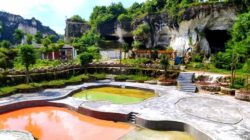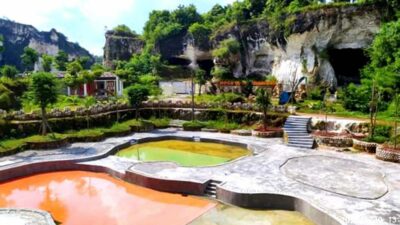China, a land shrouded in mystery and exoticism, was first discovered through the adventurous writings of Marco Polo over 700 years ago. It is not only considered the largest country in Asia, but also a fascinating blend of ancient and modern cultures. While many travelers visit China to see the Great Wall, explore the Forbidden City in Beijing, stroll along the Bund in Shanghai, or visit the Terracotta Warriors in Xi’an, there are countless other breathtaking attractions to be found.
Imagine serene temples nestled within tropical rainforests, their beauty and tranquility providing a respite from the outside world. Picture expansive rice terraces, resembling exquisite paintings crafted by the hands of skilled artists. And don’t forget the majestic mountains and breathtaking waterfalls that adorn the Chinese landscape.
With such a plethora of enticing destinations, it’s understandable that many tourists find themselves overwhelmed when deciding where to go. But fear not, for I have compiled a summary of recommended tourist spots in China that will surely captivate your imagination.
First and foremost is the Great Wall of China, a destination known throughout the world. In fact, it is considered a must-visit site when in China. This architectural wonder spans an astounding 5,000 kilometers from the Gansu Province in the west to Shanhaiguan on the Bohai Sea in the east. Most visitors access the wall from Beijing, as this section is well-preserved and easily accessible.
Next on the list is Suzhou Gardens, situated in the Jiangsu Province. These gardens, deemed among the most important in the world, offer a respite from the hustle and bustle of city life. Dating back to the 11th century, they feature picturesque ponds teeming with vibrant Koi fish, captivating buildings, man-made hills, clusters of peach trees, and meandering pathways adorned with ancient Chinese characters.
Prepare to be enchanted by the Honghe Hani Rice Terraces, a UNESCO World Heritage Site located in the Honghe Prefecture of Yunnan. Over 1,000 years of cultivation have transformed these once barren hills into a stunning sub-tropical paradise. The ingenious irrigation system stores water in the forests atop the hills, channeling it down to the terraces below. It’s during the months of December to March that one can witness the awe-inspiring spectacle of the rice fields.
As you explore the Bund in Shanghai, a symbol of the city’s architectural prowess, you’ll find yourself transported to a world reminiscent of colonial Europe. The Bund, once the most prosperous area in Shanghai during the late 18th and early 19th centuries, showcases 52 preserved English and French buildings with Renaissance and Gothic architectural styles. A leisurely stroll along the Huangpu Jiang River will make you forget you’re in the midst of China’s largest city.
Further inland, the Yellow Mountains beckon. Also known as Huangshan, these majestic peaks in eastern China offer breathtaking sunsets, imposing granite cliffs with unique formations, and awe-inspiring views above the clouds. Although ancient paths carved into the mountains boasted 60,000 steps in the past, a cable car now provides easy access to the mountain’s summit.
Embark on a Li River Cruise, a favored activity in northern Guangxi Province, and be mesmerized by the karst landscape that has inspired artists and poets for centuries. With a length of approximately 83 kilometers, the Li River meanders between Guilin and Yangshuo, showcasing stunning views of limestone hills, steep cliffs, and picturesque farming villages enveloped in thick clusters of bamboo.
No trip to China would be complete without encountering the iconic giant pandas. While many zoos in China house these beloved creatures, Chengdu is the panda capital. Chengdu Panda Breeding and Research Center, Bifengxia Panda Base, and Dujiangyan Panda Valley are the three places in Chengdu where you can witness firsthand the adorable antics of these gentle creatures.
The Terracotta Army in Xi’an, one of the world’s most famous archaeological discoveries, has become a popular tourist destination in China. These terracotta warriors and horses depict the army of Qin Shi Huang, the first emperor of China. Buried underground for over 2,000 years, they were unearthed in 1974 by a local farmer. This site is not only a UNESCO World Heritage Site, but also the largest archaeological site in the world.
In Beijing, the Forbidden City awaits, serving as a testament to China’s ancient grandeur. With over 8,000 rooms adorned with gold roofs and elegantly designed in red and yellow, the Forbidden City was the imperial palace for the Ming and Qing dynasties for 560 years. Now a UNESCO World Heritage Site, it houses cultural and historical artifacts as a museum.
Finally, the Potala Palace in Lhasa stands as the winter residence of the Dalai Lama since the 7th century. It symbolizes Tibetan Buddhism and serves as the traditional center of administration in Tibet. With over 1,000 rooms, the Potala Palace is home to the living quarters of the Dalai Lama and the opulent golden tombs of their predecessors. To reach the palace, one must ascend many stairs, so be sure to come prepared with both stamina and a camera.
In conclusion, China offers an array of awe-inspiring tourist attractions that are sure to leave a lasting impression. The Great Wall, Suzhou Gardens, Honghe Hani Rice Terraces, the Bund, Huangshan, Li River Cruise, giant pandas, Terracotta Army, Forbidden City, and Potala Palace are just a glimpse into the captivating wonders that await those who venture to this mystical country.
















